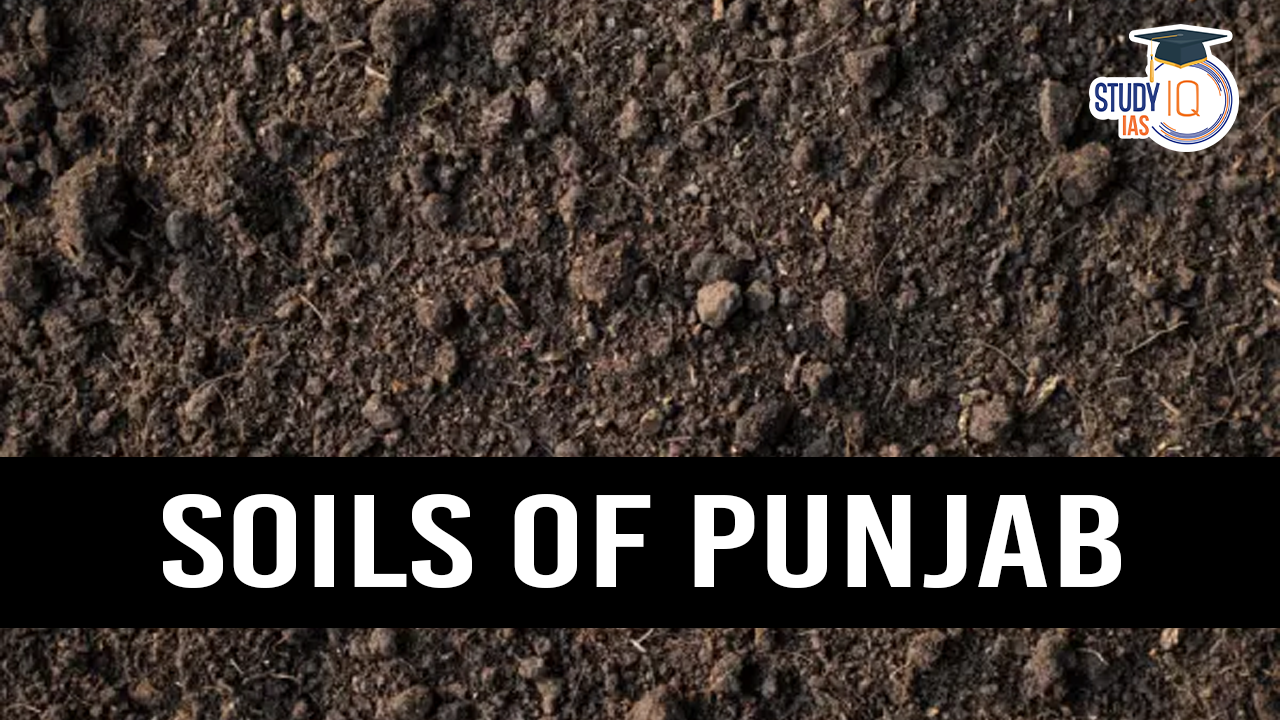Table of Contents
Soil is a blend of rock debris and organic materials formed on the Earth’s surface. Its characteristics are primarily influenced by factors like parent material, climate, relief, vegetation, time, and animal organisms.
Formation of Soils in Punjab
The soils of Punjab are part of the Indo-Gangetic drainage system, created through the deposition of alluvium brought down from the Himalayas by the Indus River and its tributaries. The region features a vast alluvial plain that gently slopes from the northeast to the southwest. In Punjab, soils are classified based on texture, climate, topography, and denudation processes. The Department of Soil and Water Conservation actively addresses and monitors soil and water-related challenges in the state.

Types of Soils in Punjab
| Soil | Characteristics | Crops Grown |
| Loamy Soils |
|
Wheat, paddy |
| Flood Plain or bet Soils |
|
Wheat, paddy, sugarcane, vegetables |
| Sandy Soils |
|
Cotton, citrus, oilseeds, wheat, fodder |
| Kandi Soils |
|
Dry land crops, winter wheat, pulses, oilseeds |
| Desert Soils |
|
Cotton, moth beans, citrus, wheat, bajra, kharif fodder |
| Seirozem Soil |
|
Wheat, paddy, oilseeds, sugarcane |
| Grey Brown Podzolic and forest Soils |
|
Suitable for forestry |
| Sodic and Acidic soils |
|
Wheat, rice, cotton, oilseeds, bajra, pulses, fodder |
Soil and Land Degradation in Punjab
Punjab faces significant soil and land degradation primarily due to over-irrigation and excessive use of chemical fertilizers.
Over-irrigation
Excessive watering is a leading cause of soil degradation in Punjab. Over-irrigation increases soil salinity, decreases soil quality, and leads to waterlogging. Poor drainage systems and low-quality irrigation water exacerbate the issue by allowing water to accumulate underground, forming water table-related pillars. Flooded soils restrict gas exchange, saturate root zones, and inhibit plant growth. Additionally, irrigation water containing salts gradually increases salinity, reducing soil fertility.
Excessive Fertilizer Use
Punjab ranks highest in the country in fertilizer consumption. During 2023-24, the state used 247.61 kg of fertilizers per hectare, nearly double the national average of 139.81 kg per hectare, according to the Union Ministry of Chemicals and Fertilizers. Although Punjab accounts for just 1.53% of India’s agricultural area, it consumes around 9% of the total fertilizers used in the country. This disproportionate usage deteriorates soil health, leaving it nutrient-depleted and less productive.
| Punjab PCS Important Links | ||
| Punjab PCS Notification | Punjab PCS Apply Online | Punjab PCS Syllabus |
| PPSC Eligibility Criteria | PPSC PYQ | Punjab PCS Notes |


 Punjab PCS Selection Process, Prelims, M...
Punjab PCS Selection Process, Prelims, M...
 State Universities of Punjab
State Universities of Punjab













